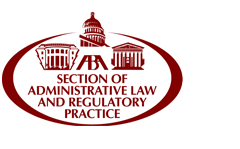Article Title
Rulemaking in the Shade: An Empirical Study of EPA's Air Toxic Emission Standards
Volume
63
Issue
1
First Page
99
Abstract
In administrative process sunlight may be the best disinfectant, but as Professor Strauss notes, the “candor and the flexibility necessary for collaboration or compromise are more likely to flourish in the shade.” This Study is designed to explore the engagement of interest groups over the entire life cycle of a rulemaking and to assess whether it is in fact in these shaded, or partly shaded phases where much of the regulatory work gets done. Specifically, we examine the air toxic emission standards set by EPA for over 100 major industries with respect to both participation and influence of interest groups at key points of the rulemaking life cycle—before the proposed rule is published; between notice and comment and the final rule; and after the final rule is published. The results reveal high levels of participation and stark imbalances among participating groups at each of these stages. At the pre-proposal stage, industry had an average of 84 informal communications with the EPA per rule; public interest groups had an average of 0.7 communications per rule. During the comment process, industry provided approximately 81% of the total comments; public interest groups provided 4%. Changes made to the final rule after notice and comment favored industry by a factor of 4 to 1 as compared to the changes benefitting the public interest. Post-final rule activity was considerable as well. Petitions and litigation occurred for 22% of the rules, with industry filings accounting for 2 times those filed by public interest groups. After promulgation of the rules, moreover, roughly 70% of the rules were revised and amended, with an average rate of over 4 revisions per rule for those that were revised at least once. These findings are consistent with other recent empirical research on the rulemaking process, but add to the evidence of extensive engagement outside of the reach of the APA as well as highlighting significant interest group imbalances at three discrete stages in the rulemaking process.
